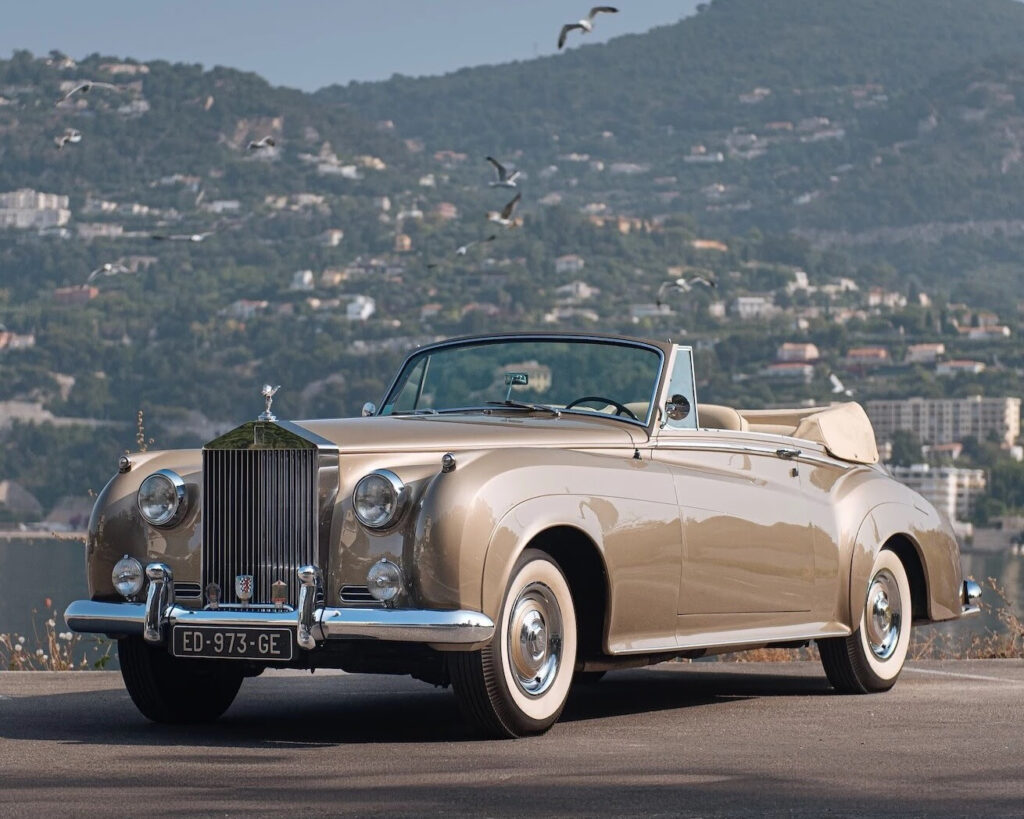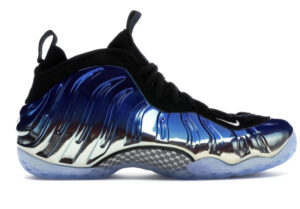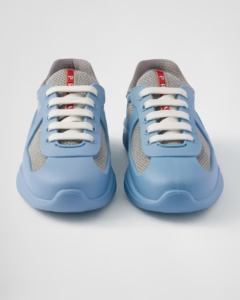There are few motorcars that carry the weight of finality quite like the 1962 Rolls-Royce Silver Cloud II Drophead Coupé Adaptation by H.J. Mulliner. It is not simply a rare Rolls-Royce; it is the last of its kind. When author and Rolls-Royce historian Davide Bassoli described this car in Every Cloud Has a Silver Lining as “the last one built… with gorgeous lines, perfect proportions,” he wasn’t just documenting a model—he was closing a chapter on a bygone era of coachbuilt haute. This car, one of just 107 Mulliner Drophead Coupés crafted on the Silver Cloud II chassis, represents the twilight of hand-formed automotive sculpture before Rolls-Royce moved toward factory integration and uniformity.
A Car Between Eras
The Rolls-Royce Silver Cloud series was introduced in 1955 as a modern interpretation of postwar British haute. By 1959, the Silver Cloud II brought a significant technical evolution: a new 6.2-liter V8 engine replacing the venerable inline-six. This change signaled both progress and a subtle philosophical shift—Rolls-Royce was becoming quieter, smoother, and more standardized. Yet the chassis remained a separate unit, allowing coachbuilders like H.J. Mulliner, Park Ward, and Hooper to continue the art of bespoke body design for a small circle of discerning clients.
Among them, Mulliner’s work stood out for its grace and restraint. Their “Adaptation” Drophead Coupé—a soft-top version of the Silver Cloud II—captured the elegance of a formal saloon while embodying the freedom of open-air motoring. The adaptation process wasn’t merely a cut-down roofline; it was a meticulous redesign of proportions, weight distribution, and rigidity, executed with coachbuilder precision. Each was built to individual specification, and with only 107 produced, exclusivity was inherent.
This particular chassis, LSAE 639, holds special distinction: it was the final Mulliner Drophead Coupé built on the Silver Cloud II platform. When production ceased in 1962, Rolls-Royce had already begun planning the more standardized Silver Shadow, effectively marking the end of traditional coachbuilding at Crewe. Thus, this 1962 example embodies not only luxury but also legacy—a final whisper of an age defined by hand-wrought perfection.
Velvet Green Origins and Golden Rebirth
Originally finished in Velvet Green with an off-white leather interior, this Drophead Coupé was built for an American client, outfitted in left-hand drive and delivered with subtle Radford touches such as the distinctive “toadstool” rear bumper cushions. In its day, the car symbolized effortless privilege, the kind one associated with transatlantic glamour—perhaps parked outside the Beverly Hills Hotel or along the Côte d’Azur promenade.
In recent years, it has undergone a bare-metal restoration, returning the car to concours condition while introducing a refined pale metallic gold exterior over ivory hide. The transformation is more than cosmetic: it speaks to the evolving aesthetic of mid-century Rolls-Royces, where heritage and modernity coexist in quiet harmony. Every element—the handcrafted wood veneers, the polished chrome details, the power-operated convertible top—reflects the timeless craftsmanship that defined Rolls-Royce’s reputation as the “best car in the world.”
The restoration was executed to exacting standards, with full documentation including factory build sheets and chassis records. Beneath the bonnet lies its original, matching-numbers 6.2-liter V8, paired with a four-speed automatic transmission. Together they deliver effortless power and near-silent motion—a Rolls-Royce paradox where performance exists but rarely announces itself.
Design That Defines an Era
H.J. Mulliner’s design language was subtle yet confident. Where many postwar convertibles flirted with flamboyance, Mulliner’s Drophead Coupé balanced British restraint with sculptural poise. The proportions are immaculate: a long bonnet tapering into a gently rising waistline, framed by delicate chrome accents and capped with a cleanly folding soft top. The rear haunches flow naturally into the trunk, neither abrupt nor exaggerated, while the iconic Pantheon grille remains a constant—an upright emblem of dignity amid a sea of changing automotive trends.
Inside, the cabin is an exercise in tailored understatement. The burl walnut fascia gleams like fine furniture; the ivory Connolly leather carries the quiet scent of craftsmanship; the Smiths instrumentation glows with the warmth of analog precision. Unlike modern luxury interiors, there are no digital distractions—only tactile connection between driver, machine, and the world outside.
Driving a Silver Cloud II Drophead Coupé was—and remains—a study in serenity. Power steering, hydraulic brakes, and a near-imperceptible automatic gearbox transform every journey into theatre. At speed, the V8 whispers; the suspension glides over imperfections; and the car’s presence elicits reverence rather than noise. This is not performance for spectacle—it is elegance in motion.
View this post on Instagram
Provenance and Market Position
The RM Sotheby’s Munich sale on October 18 at Motorworld Munich presents this Drophead Coupé with a €250,000–€300,000 estimate. Given its rarity, final-built status, and restoration pedigree, this figure may prove conservative. Comparable Mulliner Drophead Coupés—without such historic distinction—have reached as high as €375,000 at past sales. In the world of postwar Rolls-Royce collecting, “last-of-series” examples often command emotional premiums: they represent the closing paragraph of a storied narrative.
Collectors today view the Silver Cloud II Drophead Coupé as a transitional artifact—bridging the prewar tradition of bespoke craftsmanship and the emerging modernity of industrial luxury. It appeals not only to marque enthusiasts but to design purists who value proportion, balance, and narrative. This particular example, complete with its matching-numbers engine and full restoration dossier, carries investment potential both cultural and financial.
Moreover, its open-top form broadens its appeal beyond static display. Many Rolls-Royce aficionados view the Mulliner Drophead as one of the few vintage models equally suited to concours lawns and coastal drives. When properly maintained, the V8 offers mechanical reliability that surpasses many contemporaries, allowing its owner to experience the brand’s original promise—“the best car in the world”—as a living truth, not just an archival claim.
The Last Coachbuilt Dream
The 1962 Silver Cloud II Drophead Coupé by H.J. Mulliner occupies a singular space in automotive history. It is the final synthesis of what Rolls-Royce once stood for: individuality over standardization, artistry over automation. Its body panels were shaped by human hands; its interior stitched by craftsmen whose names never reached the marque’s crest yet whose legacy endures in every seam and curve.
When Bassoli referred to this very car as “the last one built,” he was not only marking an end but defining a pinnacle. In that sense, the Silver Cloud II Drophead Coupé is not a relic but a reminder—of what luxury once meant before it was digitized, globalized, and mass-produced.
At auction in Munich, beneath the lights of Motorworld, this car will stand as both artifact and aspiration. It is a time capsule from 1962, when elegance was measured in silence and proportion, when each Rolls-Royce was a conversation between engineer and artisan. For collectors and dreamers alike, it represents a truth that transcends decades: even the clouds, at their end, carry silver linings.
No comments yet.








